"Physical laws are not Python, they cannot be changed in new versions, that is, the material in the book (on electronics) will always be relevant."ne555, from comments on Habré

One of the main problems of technical journalism is the obsolescence of information due to the rapid development of technology. You can write the most complete, understandable and colorful guide in the world, but in a couple of months it will sink into oblivion after the terrible word "update".
Fortunately, this does not apply to all aspects of geek writing, for example, in the field of electronics, there is an enviable consistency for other IT areas. Therefore, the content "welded" decades ago, on which future engineers grew up, will often be relevant for their children and even grandchildren.
Inspired by the story of the "rebirth" of the 1979 electronics textbook(or rather, comments on it), we decided to collect for you a selection of books on electronics, which in 2020 turned 25 to 69 years old, but which have not lost their relevance. And in order not to be limited to our own neutral editorial introductions, we asked to comment on this selection of the winner of TechnoText-2019 in the Popular Science nomination, the old-timer Habr, a developer of integrated circuits for space and hereditary engineer Valery Shunkov aka @amartology .
Caution: Reading the books in this collection can make you want to grab a soldering iron. Get inspired, create and share your experience with Habr, because it was at the request of the community that we added a new one to the list of TechnoText-2020 nominations - “Hardware and its Development” .
I. "Young radio amateur", Victor Gavrilovich Borisov (1951)
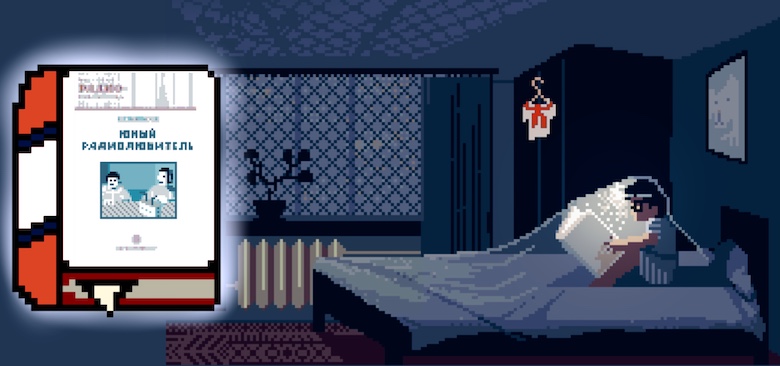
For whom: designed primarily for children of school age.
What: the book is structured as a cycle of conversations, within the framework of which the reader gets acquainted with the theory of electrical and radio engineering, circuitry, radio measurements, the technology of manufacturing radio-electronic devices. It also contains a number of descriptions of specific designs.
Briefly about the book and its creator:
Viktor Gavrilovich Borisov - Soviet radio designer and journalist. He was born in Moscow in 1915, from childhood he was interested in mathematics and physics, and therefore decided to receive education in a construction technical school in the direction of "Radio engineering". During the Great Patriotic War he served as a radio operator on a torpedo boat, received the Order of the Patriotic War II degree and many medals.
After the war, Borisov worked at the Central Station for Young Technicians (now the Federal Center for Technical Student Creativity), where he worked with young radio amateurs, for whose education he began to engage in literary creativity. For 40 (!) Years he published books and articles on radio engineering, and also headed the department “for beginner radio amateurs” in the magazine “Radio”. The most famous book by Borisov - "Young radio amateur" - withstood eight re-editions during his lifetime, the last of which was published in 1992.
Viktor Gavrilovich passed away in 2007 at the age of 92, a couple of days before Radio Day, to which he devoted his entire life.
Opinionamartology:
 “The last, eighth edition of this book was published almost 30 years ago - in fact, this is the main reason why I met it only now, when the guys from Habr asked to write a review on it. As a child, I was not a radio amateur, so in the days without an accessible Internet, the book simply had nowhere to catch my eye. Therefore, if anything, the entire subsequent review of this book can be safely skipped, because it is based not on the extensive experience of releasing magic black smoke from transistors, but on a cursory reading of several chapters from a couple of different editions. Anyway, I will treat the legend without due reverence.
“The last, eighth edition of this book was published almost 30 years ago - in fact, this is the main reason why I met it only now, when the guys from Habr asked to write a review on it. As a child, I was not a radio amateur, so in the days without an accessible Internet, the book simply had nowhere to catch my eye. Therefore, if anything, the entire subsequent review of this book can be safely skipped, because it is based not on the extensive experience of releasing magic black smoke from transistors, but on a cursory reading of several chapters from a couple of different editions. Anyway, I will treat the legend without due reverence.
Everything about this book says its name - it is intended for young radio amateurs, of whom there were much more in the 1950s than now.
, , - , — . , , ?
The book is intended for children, and specifically for children, not even teenagers. And, like any Soviet children's book, it is written in a very specific language, which annoys me personally, an adult living in 2020. However, it is also quite difficult to recommend the book to children, because the key to its half-century popularity was the constant updating and updating of the content with each new edition, and in the 30 years since 1992, quite a lot has changed. For example, in a story about frequencies, it would be extremely appropriate to describe 3-4-5G, and not just more traditional bands, the mass use of which ceased with the decline of amateur radio.
The fact that the material in a book on electronics will always be relevant is, of course, not true. He will always be truthful, but relevance is something completely different. For example, the first editions of "Young radio amateur" described the technique on lamps, and the later ones - on transistors. Has the lamp story become less accurate? No. But it is outdated. And now, unfortunately, the material about transistors is also largely outdated, because ready-made modules and software-defined radio are in use. The same goes for other fundamental books on electronics: the key to a long life is regular revisions and new editions.
Of the analogs, I can advise, in fact, the books of Rudolf Svoren. They are also addressed to a children's audience, but differ in a wider topic, with less emphasis on the specific tasks of radio amateurs. I can hardly advise anything newer, nevertheless electronics for children is too special a topic, and here the opinion of the teacher of the circle will be much more significant, and not a practicing engineer ”.
II. The Art of Circuitry by Paul Horowitz & Winfield Hill (1980)
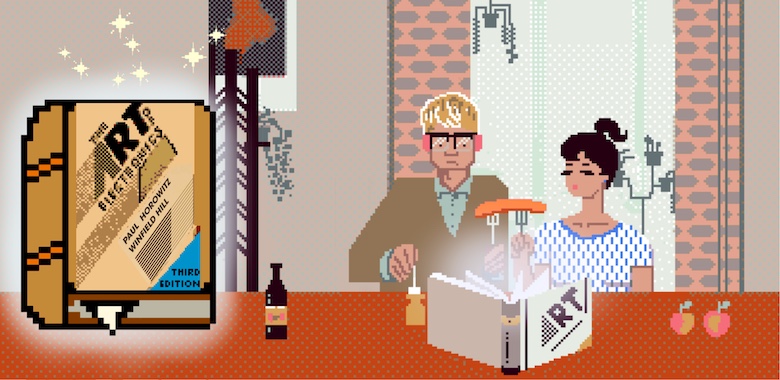
For whom: for students, professionals and amateur adults interested in electronics, automation and computer technology.
What: in Russian-language editions, the book is divided into three volumes. The first volume is devoted to circuit elements, transistors, operational amplifiers, active filters, power supplies and field effect transistors. The second volume tells about precision circuits and low-noise equipment, about digital circuits, information converters, mini- and micro-computers and microprocessors. And the third - about microprocessors, radio engineering circuits, methods of measuring and processing signals, principles of designing equipment and designing low-power devices.
About the book and its creators:
The authors of this three-volume book are American physicists, electrical engineers Paul Horowitz and Winfield Hill.
Paul Horowitz - PhD, graduate, and later professor at Harvard, where he taught laboratory electronics for more than a quarter of a century (since 1974), the notes from which later formed the basis of the future book. He worked in various fields - scanning microscopy, astrophysics and biophysics. In the field of practical electronics, he invented an acoustic mechanism for detecting landmines, a Morse / Baudot electronic keypad using a diode array, and 66 TTL integrated circuits for use in amateur radio. Notable - Horowitz also appeared in SETI (a program for the search for extraterrestrial civilizations) and is even considered the prototype of one of the heroes of Carl Sagan's science fiction novel "Contact".
Winfield Hill is the director of the laboratory of electronic engineering at the Rowland Institute (which later became part of the same Harvard University), where he designed more than 250 electronic and scientific instruments. Hill is also the founder of the Sea Data Corporation, which develops instruments for deep sea oceanography and has designed about 50 oceanographic instruments as chief engineer. He has participated in numerous experiments in the deep ocean.
Their joint work - the textbook "The Art of Circuit Engineering" - in 2020 celebrates the 40th anniversary of its release. It was globally revised twice by the authors themselves - the second edition came out in 1989, and the third, completely new, in 2015. The combination of encyclopedic and scientific intensity and the ease of language and accessibility of presentation made this work an unofficial "bible of electronics".
By the way, an interesting fact: Hill himself noted that it was no coincidence that he called the circuitry in the book "art." He noted that although the creation of a solution that simply works in principle is based on a combination of basic laws, how you can solve the same problem cheaper, more economically in terms of energy consumption or better in other parameters is already real creativity.
Opinionamartology:
 “But this book for me is a desktop one from the third year of the institute to the present day. It can be a bit daunting for beginners, but it really isn't better to find. The main advantage of The Art of Circuitry is a very well-balanced combination of theory and practice, with concrete examples, tips and stories on how to get around typical bottlenecks and imperfections that are not written about in other textbooks.
“But this book for me is a desktop one from the third year of the institute to the present day. It can be a bit daunting for beginners, but it really isn't better to find. The main advantage of The Art of Circuitry is a very well-balanced combination of theory and practice, with concrete examples, tips and stories on how to get around typical bottlenecks and imperfections that are not written about in other textbooks.
If you are going to move from sticking modules into each other to independently developing even the simplest printed circuit boards, then this book will be your best friend and teacher, now and in the foreseeable future. This is exactly the rare case when content is completely timeless.
However, something else can be said about time.
First, the second (1989) and third (2015) editions of the book differ slightly in approach. The second is more of a reference book for an engineer, and the third is trying to become a full-fledged textbook, replacing some of the examples with homework at the end of chapters. So it might be worth having both editions. Plus there is also a very recent book X chapters, which contains material that did not get into the third edition - this is something like an advanced course.
Plus, if possible, then it is better to read the book in the original, because all existing translations into Russian are guilty of mistakes and typos, including in the calculation formulas, which is especially annoying. If, nevertheless, you just need the Russian-language version, take the second edition better.
Nothing quite as comprehensive and beautiful comes to my mind, so if you want more, I can only recommend looking towards deeper books on narrower topics, for example, the two-volume "Designing High-Speed Digital Devices" by Johnson-Graham, better known as "Black magic course".
III. "Semiconductor Circuitry" by Ulrich Titze and Christoph Schenck (1980)
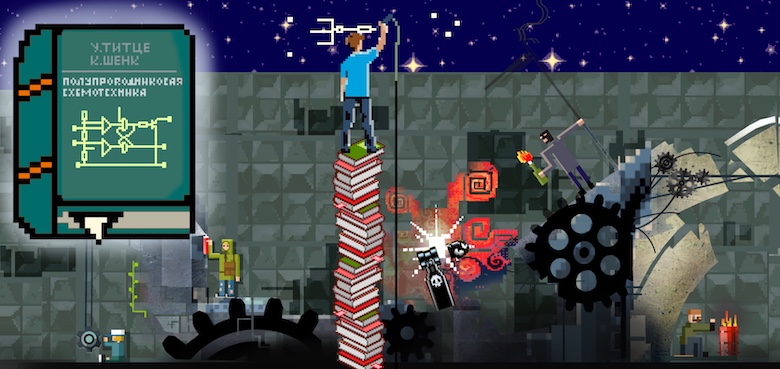
For whom: radio amateurs, radio engineering and electronics engineers and scientists.
What: about the principles of semiconductor elements and the basics of creating various functional units of analog and digital technology from these elements. In the Russian-language edition, it consists of two volumes. The first volume is devoted to the basics of circuitry, the second - to the use of functional units when creating more complex devices.
About the book and its creators:
"Handbook of the Electronic Engineer" by two German engineers, Ulrich Titze and Christoph Schenk. Unfortunately, we were unable to find detailed information about their academic status and why they decided to create and publish this work (Maybe you know more? Write in the comments.), But we did find a lot of reader reviews.
Ulrich Titze is Associate Professor at the Department of Technical Electronics at the Friedrich-Alexander University in Erlangen-Nuremberg.
Christoph Schenck is an engineer, owner of his own company dealing with technologies for automated visual inspection of surface quality.
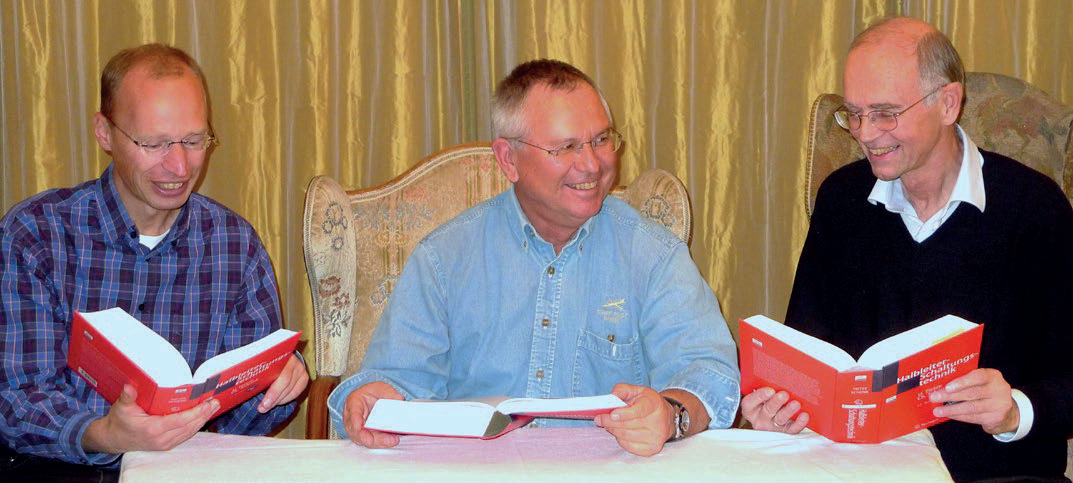
The authors of the book Gamm, Schenck and Tietze on its 40th anniversary in 2009.
Readers note the fundamental nature of the two-volume book, its encyclopedic completeness and how detailed and deeply the entire theoretical part is described. At the same time, someone considers this a disadvantage and would prefer a more practice-oriented textbook, while others, on the contrary, say that thanks to "Semiconductor Circuit Engineering" they learned to read circuits not as "pictures with conventional symbols", but as full-fledged information carriers.
Many people study "Semiconductor Circuitry" after "The Art of Circuitry" by Horowitz and Hill in order to deepen their knowledge, since elementary formulas are attached to the description of each element or circuit, which serve for their engineering calculation.
Opinionamartology:
 “Tietze and Schenk is another handbook of mine, which I met at the institute's bench. It is a little more difficult to recommend it to a wide audience due to its rather dry academic style and the abundance of specificity of microcircuit development, rather than their application. Therefore, I would recommend Horowitz-Hill as the first and main book, and I would suggest reading Titze and Schenk as a supplement in order to better understand what is happening inside the devices you are using. However, here too there are many useful schemes and time-tested excellent tricks.
“Tietze and Schenk is another handbook of mine, which I met at the institute's bench. It is a little more difficult to recommend it to a wide audience due to its rather dry academic style and the abundance of specificity of microcircuit development, rather than their application. Therefore, I would recommend Horowitz-Hill as the first and main book, and I would suggest reading Titze and Schenk as a supplement in order to better understand what is happening inside the devices you are using. However, here too there are many useful schemes and time-tested excellent tricks.
— , , – , - , . , .
For example, if you are interested in how microcircuits are arranged, the textbook "Fundamentals of Microelectronics" by IP Stepanenko, which, by the way, is a deep processing of the book "Fundamentals of the Theory of Transistors and Transistor Circuits" 1967, will do. And if you are interested in digital electronics, then ... move on to the fifth item on this list.
The main disadvantage of Tietze and Schenk's book is that it has two volumes in the Russian and English (eighth) editions, and three volumes in the original German (sixteenth) editions, and even with a third author. I will not advise the original, just keep in mind that the basics are perfectly given in this book, but the newest and most relevant should be looked elsewhere. "
IV. "Electronic homemade products", Boris Sergeevich Ivanov (1985)
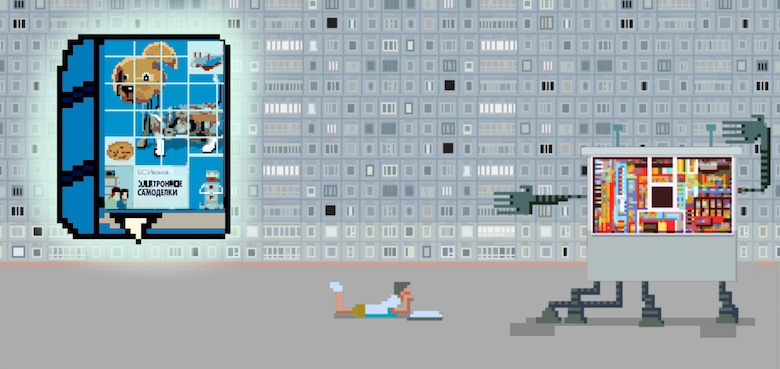
For whom: for schoolchildren in grades 5-8.
What: the book contains step-by-step algorithms for creating electronic devices, and also teaches you how to read radio circuits, select and check radio parts, and establish homemade products.
About the book and its creator:
Boris Sergeevich Ivanov began publishing in popular science media (such as "Young Technician", "Modelist-Constructor", "Pioneer") at the age of 22 (since 1958) and devoted almost his entire life to technical journalism ... For more than 40 years (since 1975) he worked in the magazine "Radio", where for a long time he headed the section "Radio" for beginners, independently wrote articles and edited other people's opuses. Also for more than 20 years he was the editor-compiler of the children's magazine "Trowel", regularly published books, teaching aids and articles for young radio amateurs.
At the same time, Boris Sergeevich actively collaborated with radio circles, children's and youth clubs and the Palaces of young technicians, clarified with the teachers how effectively training should be based on its publications, created additional teaching aids on request for the convenience of young readers and their mentors. His manuals have been repeatedly published and republished not only in Russia, but also in Ukraine, Moldova, Lithuania, Latvia, Uzbekistan. He passed away in 2015, shortly before his 80th birthday.
On his books and brochures, such as "Oscilloscope is your assistant" , "Homemade products of a young soldier", "To help the radio circle" and "Encyclopedia of a beginner radio amateur", more than one generation of technoDIY workers of past years has grown.
Opinionamartology:
 “Another legendary children's book. In my opinion, she is also one of those who have aged poorly, and her respectable status, unfortunately, does not make this work more relevant. The book is a collection of ready-made recipes for young home-builders, completely devoid of theory. And without understanding how and why certain schemes work, the result of communicating with the book will be fun, but useless. And will it be that much fun for a child of the 21st century: will it really be interesting for a child to make a primitive wired telephone in an age when everyone has a lot of gadgets?
“Another legendary children's book. In my opinion, she is also one of those who have aged poorly, and her respectable status, unfortunately, does not make this work more relevant. The book is a collection of ready-made recipes for young home-builders, completely devoid of theory. And without understanding how and why certain schemes work, the result of communicating with the book will be fun, but useless. And will it be that much fun for a child of the 21st century: will it really be interesting for a child to make a primitive wired telephone in an age when everyone has a lot of gadgets?
However, if you approach this book as a kind of problem book for those who have already got acquainted with the basics of the theory (at least with the same "Young radio amateur"), then it can turn out to be really entertaining and useful.
However, when giving this book to your child, be careful: there is a story about grounding not only with the help of a bucket buried in the ground, but also through heating batteries, which are definitely not worth using for this purpose in 2020 ”.
V. "Computer Architecture and Computer Systems Design" by David Patterson, John Hennessy (1994)
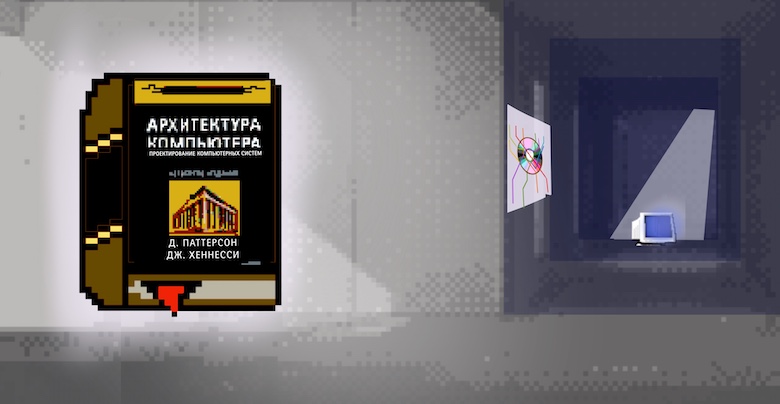
For whom: For students studying computer technology, and developers who want to master modern concepts of multiprocessor programming.
What: about the architecture of a computer and about the structure of all its components: processors, memory blocks, input-output and data storage.
About the book and its creators:
David Patterson is an American computer scientist and microprocessor designer. He graduated from the University of California at Los Angeles with a PhD, and was for a time Dean of the Faculty of Computer Science there. Patterson also led the Computer Research Association, advised on the SPARC project, and in 2003-2005 was a member of PITAC (US Presidential Information Technology Council).
Patterson is best known for his contributions to the design of RISC processors, the reduced instruction set computer (RISC) architecture that is now used in 99% of new computer chips. He was Project Leader for Berkeley RISC, and was also involved in the concept of RAID arrays and the concept of Network of Workstations. Winner of numerous scientific awards such as the John von Neumann Medal (2000), the C&C Prize (2004), the Eckert-Mauchly Prize (2008) and the Turing Prize (2017). He received the latter for the development of RISC processors in tandem with John Hennessy.
John Hennessy is a former president of Stanford University (2010-2016), American computer scientist, academician, businessman, board member of Alphabet Inc (ex Google), Cisco Systems, Atheros Communications and the Gordon and Betty Moore Foundation. Mark Andreessen called him "the godfather of Silicon Valley."
Hennessy received his BS from Villanova University in Philadelphia and then his PhD from Stony Brook University in New York. Since 1977, he taught at Stanford University, later headed the Computer Systems Laboratory there, then became Head of the Department of Computer Science, Dean of the Faculty of Engineering, Vice-Rector (instead of Condoleezza Rice) and, finally, President of Stanford.
Together with a group of researchers from Stanford, he created MIPS Computer Systems Inc, a phabless company that designs microelectronic devices.
Hennessy is also a member of the Association for Computing Machinery (ACM) and a researcher at the Museum of Computer History, holder of the IEEE Medal of Honor and Honorary Doctorate in Mathematics from the University of Waterloo (Canada) and, as mentioned above, a Turing Prize winner.
Patterson and Hennessy's joint book, Computer Architecture and Computer Systems Design, has been reprinted and revised several times over the 26 years since its release to reflect the latest developments in hardware. The book perfectly illustrates the interaction between hardware and system software, with a focus on multicore computing and parallel programming.
Opinionamartology:
 “This book is a fundamental work on digital electronics from the founding fathers of modern processor design. It went through five editions and was seriously revised during this time, only gaining relevance.
“This book is a fundamental work on digital electronics from the founding fathers of modern processor design. It went through five editions and was seriously revised during this time, only gaining relevance.
This is a very serious and deep analysis of the principles of building modern digital "hardware" and its interaction with software.
I believe this is a must-read for any hardware engineer. And also for programmers who want to understand what is happening “under the hood” of modern multi-core processors and how to use this understanding for good.
Together with this book, I can also recommend "Digital Circuitry and Computer Architecture" by Harris and Harris - a newer and perfectly complementary work by Patterson-Hennessy designed for an advanced audience. Both books are well enough translated into Russian and are unlikely to cease to be relevant in the foreseeable future. "
Vi. "Electronics Practical Course" by Martin Hartley Jones (1995)
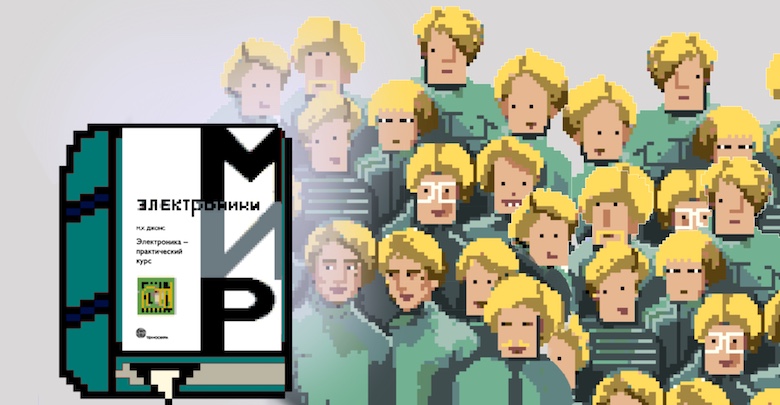
For whom: for students of secondary and higher educational institutions of radio engineering and electronic specialties, as well as for students of non-core specialties (chemistry, biology), for whom electronics is a minor specialty.
What: on the principles of building basic circuits of modern electronics for analog and digital devices.
About the book and its creators:
Martin Hartley Jones received his PhD in electroacoustics from the University of Manchester, where he stayed for a time as a professor. In 1976, he joined Neve Electronics, a leading professional audio company in Cambridge, as CTO and led the development of innovations such as the world's first digital control room for the BBC and the world's first broadcast control system. Later, in 1985, he joined Smiths Industries plc as Technical Director of the Marine Division (Kelvin Hughes Ltd), where he developed computer controlled digital radar systems for civil and military applications. After changing several management positions in this company, in 2002 he decided to open his own consulting business in Cambridge,is an IBD accredited business consultant. With all this, he did not forget about science and continues to be a researcher in such international scientific societies as IMarEST (Institute of Marine Engineering, Science and Technology), IOP (Institute of Physics), IOA (Acoustic Institute) and AES (Society for Audio Engineering).
Among the advantages of the book "Electronics - a practical course" is a very accessible language of presentation, noted, it seems, by all readers and teachers without exception, who use this work as a basic textbook. The second big plus is the abundance of explanatory illustrations on all topics, as well as the availability of practical tasks for calculating electrical circuits and describing experiments for self-conduct, which make learning more visual, engaging and practice-oriented.
The book can be called a basic textbook or a "primer" of electronics - the theory is presented in it as clearly and completely as possible, but at the same time there is no deepening in particular or into the mathematical base. True, it is assumed that the reader, starting the book, is still familiar with the very basics of electronics, such as resistance, voltage and current.
The book was reprinted and updated several times, however, some readers note that in the last edition of 2008 the translators made serious mistakes in the formulas, so it is better to read the calculations with a pencil.
It is noteworthy that the translators have retained the "Western" terminology and descriptions, which, on the one hand, simplifies further training from foreign sources, but on the other hand, makes it necessary to search the Internet for correspondences to domestic terms and details.
Opinionamartology:
 “The second book of this top, which turned out to be completely new for me. However, this is not surprising, because there are actually quite a lot of good textbooks on electronics. This tutorial is really good, if not outstanding. Not outstanding in many respects because it has not been reprinted or updated for a very long time, which is disastrous for a practical manual. The "digital" part of the book has especially suffered from this - it is possible not to read further than the 12th chapter.
“The second book of this top, which turned out to be completely new for me. However, this is not surprising, because there are actually quite a lot of good textbooks on electronics. This tutorial is really good, if not outstanding. Not outstanding in many respects because it has not been reprinted or updated for a very long time, which is disastrous for a practical manual. The "digital" part of the book has especially suffered from this - it is possible not to read further than the 12th chapter.
But the basic basics and the part about analog circuitry are presented quite at their best. The book provides enough answers to simple questions and enough knowledge for the reader to start asking difficult questions to someone else.
But in general, I repeat, nothing unusual - so you'd better buy Horowitz-Hill. "
What other IT books that are over 20 years old could you include in this collection? Share timeless classics in the comments. Well, if you have your own worthy texts, apply for the TechnoText-2020 competition of IT articles: Habr will help them to become incorruptible.
